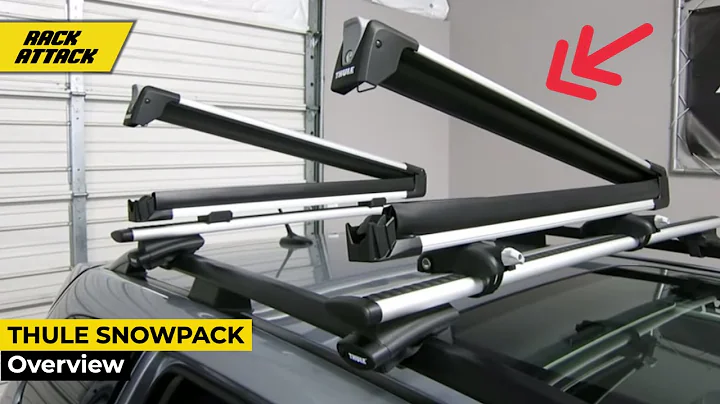Restarting an Oil Furnace: Fix Hard Lockout & Bleed Fuel Lines
Table of Contents
- Introduction
- Understanding the Issue
- Troubleshooting Steps
- 3.1 Resetting the Controller
- 3.2 Opening the Bleeder Valve
- 3.3 Checking Fuel Flow
- Temporary Lockout Scenarios
- Dealing with Permanent Lockout
- Ensuring Proper Fuel Flow
- Viewing the Flame
- Conclusion
- Additional Resources
Introduction
Hey everyone! Scott here from Everyday Home Repairs. Today, I want to talk to you about a common issue many homeowners face when it comes to their heating systems. It can be quite frustrating when you're in the middle of a rehab project and suddenly find yourself without heat. But don't worry, I've got you covered. In this article, we'll explore the troubleshooting steps to get your heat back up and running in no time. So let's dive right in!
Understanding the Issue
Before we get started with troubleshooting, it's important to understand the problem at hand. The flashing light on your Beckett controller indicates that it's in a lockout condition. This means that the system has tried numerous times to start but has failed, resulting in a temporary or permanent lockout. To resolve this issue, we'll need to reset the controller and ensure proper fuel flow.
Troubleshooting Steps
3.1 Resetting the Controller
To begin troubleshooting, locate the reset button on your Beckett controller. Press and hold the button for approximately 45 seconds. At the end of this duration, you'll notice the LED light flash once, indicating that the controller has reset and is ready to go through its cycle.
3.2 Opening the Bleeder Valve
Next, locate the bleeder valve, usually positioned near the oil pump. Grab a 3/8 wrench and turn the valve counterclockwise to open it. This will allow the pump to turn on and attempt to pull fuel into the system. The goal here is to remove any air from the fuel system, ensuring that only fuel is being pulled in.
Note: While opening the bleeder valve, you may notice a small amount of fuel drip out, accompanied by a significant amount of air. This means that several iterations may be required to achieve the desired result.
3.3 Checking Fuel Flow
If you're experiencing a lack of fuel flow, it's essential to check your fuel lines back to the filter. Make sure you have a new filter installed and that there's proper flow through it. Additionally, inspect the fuel line connection to your tank. Any blockages or leaks in these areas can hinder the fuel flow and cause the lockout condition.
Temporary Lockout Scenarios
After following the troubleshooting steps mentioned earlier, your system might temporarily go into a lockout scenario. In this case, you'll need to press the red reset button to clear the lockout and allow the pump to turn on again. Remember, it's crucial to remove any remaining air from the fuel system before it attempts to light the flame. This may require repeating the process for a few cycles until the fuel flow is consistent.
Dealing with Permanent Lockout
If your system keeps going back into a permanent lockout, you'll need to hold the red reset button for an extended period. This is usually the case after a few temporary lockout scenarios. By holding the button, you're giving the system enough time to reset and attempt to ignite the flame. Once the light turns back on, you can continue troubleshooting by opening the bleeder valve to remove any remaining air.
Ensuring Proper Fuel Flow
The key to resolving the lockout issue lies in ensuring proper fuel flow. Throughout the troubleshooting process, keep an eye on the fuel coming out of the bleeder valve. It should gradually transition from air-dominant to a steady stream of fuel with minimal air. This indicates that the fuel is successfully passing through the filter and lines, minimizing the chances of further lockouts.
Viewing the Flame
Once you've addressed the lockout issue and achieved a steady fuel flow, it's time to check if the flame has ignited. Locate the viewing slot or glass on your heating system and observe whether the flame is present. A steady flame indicates that your heating system is functioning correctly, and you can finally enjoy the warmth it provides.
Conclusion
Congratulations! You've successfully troubleshooted and resolved the lockout issue in your heating system. By following the steps outlined in this article, you've learned how to reset the controller, open the bleeder valve to remove air, ensure proper fuel flow, and verify the presence of the flame. Remember, regular maintenance and care for your heating system can help prevent future lockout situations. If you encounter any further issues or need additional assistance, don't hesitate to reach out to an HVAC technician.
Additional Resources
For more information and helpful tips on troubleshooting heating systems, visit these resources:
Highlights
- Troubleshooting steps to resolve a lockout condition in your heating system
- Resetting the Beckett controller and opening the bleeder valve
- Checking fuel flow and ensuring it is free from air
- Dealing with temporary and permanent lockout scenarios
- Viewing the flame to ensure proper ignition
FAQ
Q: How often should I perform maintenance on my heating system to prevent lockout situations?
A: It is recommended to schedule annual maintenance for your heating system to ensure its smooth operation and reduce the likelihood of lockout scenarios. Regular maintenance includes filter replacements, checking fuel lines, and inspecting the overall condition of the system.
Q: Is it necessary to call a professional HVAC technician for every lockout situation?
A: Not necessarily. Minor lockout scenarios can often be resolved by following the troubleshooting steps mentioned in this article. However, if the issue persists or if you're unsure about performing the necessary steps, it's always best to consult a professional HVAC technician for expert assistance.
Q: Can a lockout condition occur due to other factors besides fuel flow issues?
A: Yes, although fuel flow issues are the most common cause of lockout conditions, other factors can contribute to this problem as well. Issues with ignition, faulty wiring, or malfunctioning components can also lead to lockouts. If you've addressed the fuel flow and are still experiencing lockouts, it's recommended to seek professional help to identify and resolve the underlying cause.
Q: Are there any safety precautions I should take while troubleshooting my heating system?
A: Absolutely. Always ensure that the power to your heating system is turned off before attempting any troubleshooting steps. Additionally, be cautious when working with fuel lines and open flames. If you're unsure or uncomfortable with any step, it's best to seek professional assistance to avoid any potential hazards.







